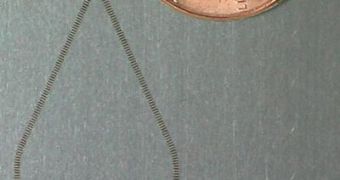The terahertz frequencies of the electromagnetic spectrum are just now beginning to be explored by humans. Terahertz devices have already been developed and used to create security scanners, able to view through solid materials much in the same way X-rays do; however, US researchers believe they would have better application in data processing. Current computer processing power is limited to only several billion cycles per second, while scientists have already "demonstrated the first step towards making circuits that use terahertz radiation, and ultimately they might work at terahertz speeds," said Ajay Nahata, from the University of Utah.
Optical fibers have the capability of carrying signals with frequencies much higher than that of the terahertz spectrum, and although they have an exceptional quality they are also very hard to process, because photons of light do not interfere with each other as they travel. Because terahertz waves interact with the electrons within the atoms of a metal surface, signals are much easier to process.
Terahertz waveguides, with the ability of carrying, splitting and re-combining the signal, can be created by simply making rectangular holes within a sheet of metal, each 50 by 500 micrometers in size.
Previous terahertz waveguides lacked the ability of carrying terahertz signals on planes and could only guide them in a straight line, unlike the terahertz waveguides developed at the University of Utah, which could prove crucial in creating circuits capable of processing such signals.
The device bears a light similarity to the infrared light processing inside fiber optics. "No such thing had been available for terahertz. It's a very nice demonstration. Wires and optical waveguides that carry and process light and electricity have made today's computing possible. We hope by analogy that this does the same thing for terahertz. It's an enabling technology, but what it will enable us to do is a harder question," says Rice University researcher, Daniel Mittleman.

 14 DAY TRIAL //
14 DAY TRIAL //